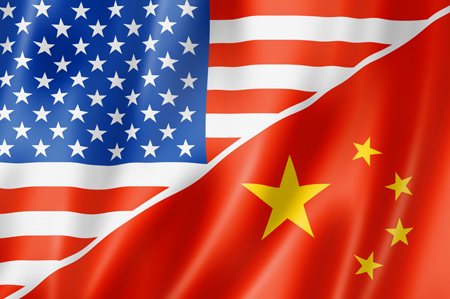Commentary: Don’t be Fooled by China’s Soybean Buy; Crude, LNG, Coal are the Big Fish

(Reuters) – There is a risk that investors will get carried away with optimism over an easing of the U.S.-China trade dispute on the back of China resuming purchases of U.S. soybeans.
This is especially the case given there is yet no sign of new imports of crude oil, liquefied natural gas (LNG) and coal, the energy commodities that will provide a far better signal of any detente in the trade spat.
China ended a six-month boycott of buying U.S. soybeans on Wednesday, with state-owned companies purchasing at least 500,000 tonnes of the oilseed, traders said.
Traders also said it appears the Chinese may seek more soybeans in coming weeks as they are struggling to meet all their import requirements from other suppliers.
This sounds extremely positive for U.S. President Donald Trump and the trade war truce he claimed to have brokered with his Chinese counterpart Xi Jinping at the G20 meeting in Argentina earlier this month.
It may well be the first sign of a major thaw between the two administrations, and it may even herald the start of positive moves towards some kind of settlement that would see no more tariffs being imposed, and perhaps even the removal of the ones already implemented.
But it’s also worth putting things in context.
China used to be the biggest buyer of U.S. soybeans, taking about 60 percent of exports in 2017, worth an estimated $12 billion.
However, since Beijing slapped a tariff on soybean imports from the United States, the trade has fallen away, with U.S. exports to China dropping to 8.2 million tonnes in the first 10 months of the year, down from 21.4 million in the same period last year, according to government figures.
What this shows is that China would have to dramatically boost its buying from the United States to return to former levels, which makes the recent 500,000-tonnes purchase a spit in the bucket.
It’s also likely that China finds it convenient to go back to the U.S. market at the present time, given the U.S. crop is ready for export, while that from southern hemisphere rival Brazil isn’t.
GIVE TRUMP A BONE
This means there is a seasonal element to trade in soybeans, and the Chinese government may have had little choice but to resume U.S. imports, but they have done so in a way that delivers Trump a little victory that may appease the mercurial U.S. president.
What would be far more significant than buying some cargoes of soybeans, which China needs anyway, is the resumption of imports of energy commodities.
One of Trump’s aims in starting a trade fight with Beijing was that he wanted to reduce the U.S. trade deficit with China, but the opposite has proven to be the case.
While Trump focused on putting tariffs on imports from China, the Chinese simply stopped the one area of trade that was growing rapidly and helping lower the trade imbalance, namely imports of crude oil, liquefied natural gas (LNG) and coal.
In the first nine months of this year, China imported about 328,000 bpd from the United States – about 3.6 percent of its total crude imports.
But this dropped to zero in October, and in November one cargo of U.S. crude was discharged, according to ship-tracking data compiled by Refinitiv.
More importantly, there is no sign of the trade resuming, with no cargoes currently booked to arrive in December, or beyond, according to the data.
It’s worth noting that crude oil isn’t subject to any Chinese import tariff, although LNG and coal are.
In LNG, no U.S. cargoes of LNG arrived in China in October, although two were discharged in November.
However, no cargoes are slated for arrival in December or beyond.
In the first nine months of the year, 31 ships delivered a total of 2.2 million tonnes of LNG from the United States to China, representing about 6 percent of total imports, according to the vessel-tracking data.
China imported zero U.S. coal in October, two cargoes totalling about 211,000 tonnes in November, and none are scheduled to arrive in December or January.
In the first nine months of the year, China imported 3.2 million tonnes of U.S. coal, the majority of this being higher-value metallurgical coal used in steelmaking.
Obviously this situation can change, and Chinese importers of crude, LNG and coal may well choose to resume buying from the United States.
But, perhaps unlike soybeans, they don’t have to as there are currently plenty of alternative suppliers.
If there really was a detente looming in the U.S.-China trade dispute, then a clear sign of that would be a resumption of energy imports.




